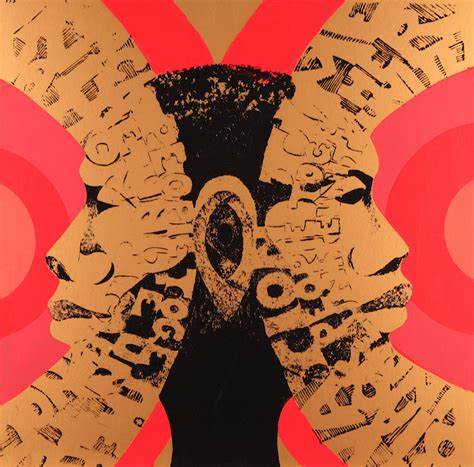 Barbara Jones-Hogu (born Chicago, IL 1938–died Chicago Heights, IL 2017)
Barbara Jones-Hogu (born Chicago, IL 1938–died Chicago Heights, IL 2017)
Painter and printmaker Barbara Jones-Hogu was a founding member of the African Commune of Bad Relevant Artists (AfriCOBRA), an artist collective formed in Chicago in 1968. Members of AfriCOBRA visually expressed the central ideas of the Black Power movement—self-determination, unity, and black pride. The group shared the idea that their art should be uplifting, highlighting the beautiful and heroic aspects of African American experience, and should be easy for ordinary people to understand. As a result, AfriCOBRA produced a unique aesthetic, characterized by simplified forms, vivid colors, and strong, often competing, patterns. One of Jones-Hogu’s most important contributions to AfriCOBRA’s style was the incorporation of words into her images to make their meaning perfectly clear. Prior to her involvement with AfriCOBRA, Jones-Hogu studied art at Howard University, the School of the Art Institute of Chicago, and the Illinois Institute of Technology. Though best known for the screen prints she created and exhibited while a member of AfriCOBRA, Jones-Hogu was originally a painter, and in 1967 she contributed to the mural Wall of Respect on Chicago’s South Side. In her later years, Jones-Hogu continued to work in Chicago as an artist and started using digital imagery and making documentary films
Recent acquistions by the Schomburg Center
 The Library purchased One People Unite (1969), a color screen print on Crescent artist board covered in gold metallic paper. The mix of colors, shadows, and type, Lawson said, gives the piece a 3-D effect and a feeling of visual movement.
The Library purchased One People Unite (1969), a color screen print on Crescent artist board covered in gold metallic paper. The mix of colors, shadows, and type, Lawson said, gives the piece a 3-D effect and a feeling of visual movement.
Jones-Hogu’s estate donated the second screen print, God’s Child (2009). “I think it is actually Barbara as a little girl,” Lawson said. “Look at how the words just jump off this. This looks like it’s radiating.”
The acquisitions are part of the division’s initiative to identify, collect, and preserve artwork by emerging and established Black female artists advancing Black culture, said Tammi Lawson, the division’s curator.
“Historically, women artists are underrepresented in any museum worldwide, but Black women artists even less. I just wanted to be able to include women to fill the gap in our collection, so they are fairly represented because they are really [creating] a lot of work. A lot of our artists are seasoned and are now being recognized.”



Leave a comment